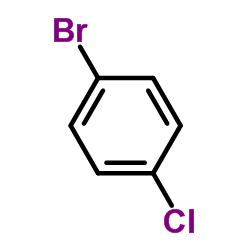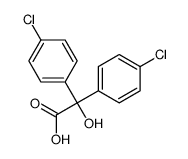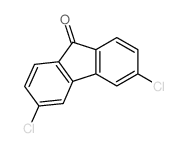Chlorobenzilate

Chlorobenzilate structure
|
Common Name | Chlorobenzilate | ||
|---|---|---|---|---|
| CAS Number | 510-15-6 | Molecular Weight | 325.187 | |
| Density | 1.3±0.1 g/cm3 | Boiling Point | 452.3±40.0 °C at 760 mmHg | |
| Molecular Formula | C16H14Cl2O3 | Melting Point | 37ºC | |
| MSDS | Chinese USA | Flash Point | 227.4±27.3 °C | |
| Symbol |


GHS07, GHS09 |
Signal Word | Warning | |
| Name | chlorobenzilate |
|---|---|
| Synonym | More Synonyms |
| Density | 1.3±0.1 g/cm3 |
|---|---|
| Boiling Point | 452.3±40.0 °C at 760 mmHg |
| Melting Point | 37ºC |
| Molecular Formula | C16H14Cl2O3 |
| Molecular Weight | 325.187 |
| Flash Point | 227.4±27.3 °C |
| Exact Mass | 324.032013 |
| PSA | 46.53000 |
| LogP | 4.73 |
| Vapour Pressure | 0.0±1.2 mmHg at 25°C |
| Index of Refraction | 1.588 |
| Stability | Stable. Combustible. Incompatible with strong oxidizing agents, strong acids, alkalies, lime. |
CHEMICAL IDENTIFICATION
HEALTH HAZARD DATAACUTE TOXICITY DATA
MUTATION DATA
|
| Symbol |


GHS07, GHS09 |
|---|---|
| Signal Word | Warning |
| Hazard Statements | H302-H319-H410 |
| Precautionary Statements | P301 + P312 + P330-P305 + P351 + P338 |
| Personal Protective Equipment | dust mask type N95 (US);Eyeshields;Gloves |
| Hazard Codes | Xn: Harmful;N: Dangerous for the environment; |
| Risk Phrases | R22 |
| Safety Phrases | S60-S61-S36/37-S24/25-S23-S53 |
| RIDADR | UN 1593 6.1/PG 3 |
| RTECS | DD2275000 |
| HS Code | 2918199090 |
|
~% 
Chlorobenzilate CAS#:510-15-6 |
| Literature: Levy, Amalia; Rakowitz, Amber; Mills, Nancy S. Journal of Organic Chemistry, 2003 , vol. 68, # 10 p. 3990 - 3998 |
|
~% 
Chlorobenzilate CAS#:510-15-6 |
| Literature: Levy, Amalia; Rakowitz, Amber; Mills, Nancy S. Journal of Organic Chemistry, 2003 , vol. 68, # 10 p. 3990 - 3998 |
|
~% 
Chlorobenzilate CAS#:510-15-6 |
| Literature: Voegtli; Laeuger Helvetica Chimica Acta, 1955 , vol. 38, p. 46,63 |
|
~% 
Chlorobenzilate CAS#:510-15-6 |
| Literature: Voegtli; Laeuger Helvetica Chimica Acta, 1955 , vol. 38, p. 46,63 |
| HS Code | 2918199090 |
|---|---|
| Summary | 2918199090 other carboxylic acids with alcohol function but without other oxygen function, their anhydrides, halides, peroxides, peroxyacids and their derivatives。Supervision conditions:None。VAT:17.0%。Tax rebate rate:9.0%。MFN tariff:6.5%。General tariff:30.0% |
|
Development of QSAR models for predicting hepatocarcinogenic toxicity of chemicals.
Eur. J. Med. Chem. 44 , 3658-64, (2009) A dataset comprising 55 chemicals with hepatocarcinogenic potency indices was collected from the Carcinogenic Potency Database with the aim of developing QSAR models enabling prediction of the above u... |
|
|
Sensitization of multidrug resistant (MDR) cancer cells to vinblastine by novel acridones: correlation between anti-calmodulin activity and anti-MDR activity.
Med. Chem. 2(1) , 63-77, (2006) Multidrug resistance (MDR) of cancer cells remains to be an important cause of chemotherapy failure. Search for the new MDR reversal agents is still an unceasing challenge for the scientists. In an at... |
|
|
Matrix effect in guava multiresidue analysis by QuEChERS method and gas chromatography coupled to quadrupole mass spectrometry.
Food Chem. 199 , 380-6, (2016) "Quick, Easy, Cheap, Effective, Rugged and Safe" (QuEChERS)-GC/MS analytical technique was used to evaluated matrix effect of twenty-two pesticides in guava. Validation parameters (selectivity, linear... |
| Akar |
| 4,4'-dichloro-benzilic acid ethyl ester |
| ethyl 4-chloro-α-(4-chlorophenyl)-α-hydroxybenzeneacetate |
| Benzeneacetic acid, 4-chloro-α-(4-chlorophenyl)-α-hydroxy-, ethyl ester |
| Chlorbenzilat |
| Acarben 4E |
| Acar |
| Chlorobenzylate |
| ethyl 2-hydroxy-2,2-bis(4-chlorophenyl)acetate |
| Folbex |
| Chlorbenzylate |
| ethyl 2,2-bis(4-chlorophenyl)-2-hydroxyacetate |
| Benzeneacetic acid, 4-chloro-α- (4-chlorophenyl)-α-hydroxy-, ethyl ester |
| Acaraben |
| EINECS 208-110-2 |
| 4-Chloro-a-(4-chlorophenyl)-a-hydroxybenzeneacetic Acid Ethyl Ester |
| MFCD00055312 |
| Chlorobenzilate |
| 4,4'-Dichlor-benzilsaeure-aethylester |
| Ethylbis(4-chlorphenyl)(hydroxy)acetat |
| ethyl bis(4-chlorophenyl)hydroxyacetate |
| Ethyl bis(4-chlorophenyl)(hydroxy)acetate |
| Benzilan |





 CAS#:34223-82-0
CAS#:34223-82-0
